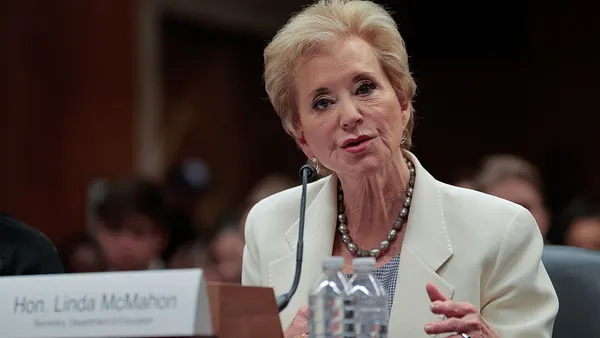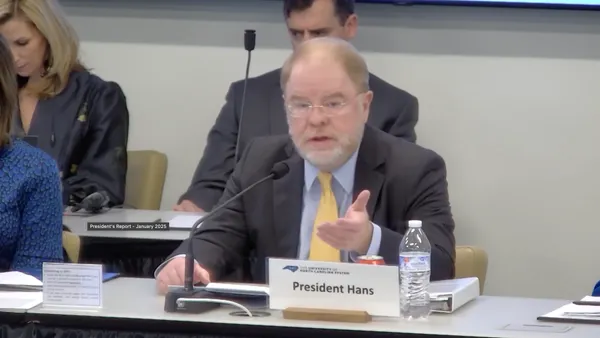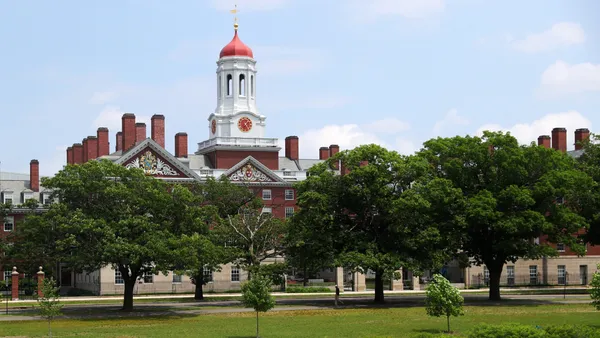Dive Brief:
- Brown University’s top officials warned Monday of “significant cost-cutting” amid the Trump administration’s cuts to research funding and the likelihood of more reductions ahead.
- The leaders indicated possible staff reductions along with changes to faculty and staff hiring later in the summer. Additional measures include scaling back capital spending and adjusting graduate admissions levels after limiting budget growth for doctoral programs earlier this year.
- The cuts come as the federal government under President Donald Trump halts vast sums of spending on research grants and contracts. That includes $45 million in unpaid bills to Brown from the National Institutes of Health as of June 30.
Dive Insight:
Brown is part of an ever-growing group of colleges forced into significant austerity measures as the Trump administration wages financial warfare on the U.S. system of scientific and scholarly research.
Brown’s own experience reflects much of the confusion and fiscal turmoil throughout the sector. Since April, for example, “the government has (with no formal explanation) ceased paying bills on existing Brown grants from the National Institutes of Health (NIH), which represent over 70% of the University's federal research funding,” the officials said.
And the lost funding keeps adding up. From NIH alone, the total losses increase by roughly $3.5 million a week.
Along with fellow Ivy League universities Harvard and Columbia, the Trump administration has reportedly planned to target Brown by freezing research funding over campus antisemitism allegations. However, the Trump administration never officially announced a freeze and Brown officials said in April they could not substantiate the “rumors.”
Much more financial pain could be ahead if congressional Republicans pass some of the higher education proposals included in the massive spending and tax cut package under consideration in the reconciliation process, which allows passage with a simple majority vote in the Senate.
For Brown, that includes a higher tax on endowment returns, cuts to federal agencies that fund research and reductions to Pell Grant awards, noted President Christina Paxson, Provost Francis Doyle III and Sarah Latham, Brown’s head of finance and administration.
As it navigates current and potential disruptions, the university has taken out a $300 million term loan. In March, it instituted a staff hiring freeze, which officials plan to extend at least through the end of the summer. University executives have also accepted a freeze on salary increases, and Paxson, Doyle and Latham have taken a 10% pay cut to help reduce costs.
Even before Trump retook office, Brown struggled with fiscal deficits. For fiscal 2024, the institution reported a $41.9 million total operating deficit. In December, Brown announced plans to restrict faculty growth and freeze its staff headcount while it tried to limit its budget gap to $60 million for fiscal 2026.
At the time, Brown officials cited familiar woes in the higher ed world: static student body, rising costs and heavy tuition discounting. All of those challenges remain and may be compounded by the upheavals in Washington.












